Abstract
We have studied by gel electrophoresis the variability of 14 structural genes in four sibling species, Drosophila willistoni, D. paulistorum, D. equinoxialis, and D. tropicalis. Samples of about 30 populations from different parts of the distribution areas of each species were examined. Genetic variants are found at every locus; 67% of the loci are polymorphic, having two or more alleles, the rarer of which has a frequency of 5% or higher.
The gene frequencies are fairly uniform over the distribution area of each species, but considerably different in different species. It is estimated that individuals which belong to the different species differ on the average in somewhat more than one half of their gene loci. The morphological similarity of the four sibling species contrasts with the extensive diversity in their genetic materials.
Full text
PDF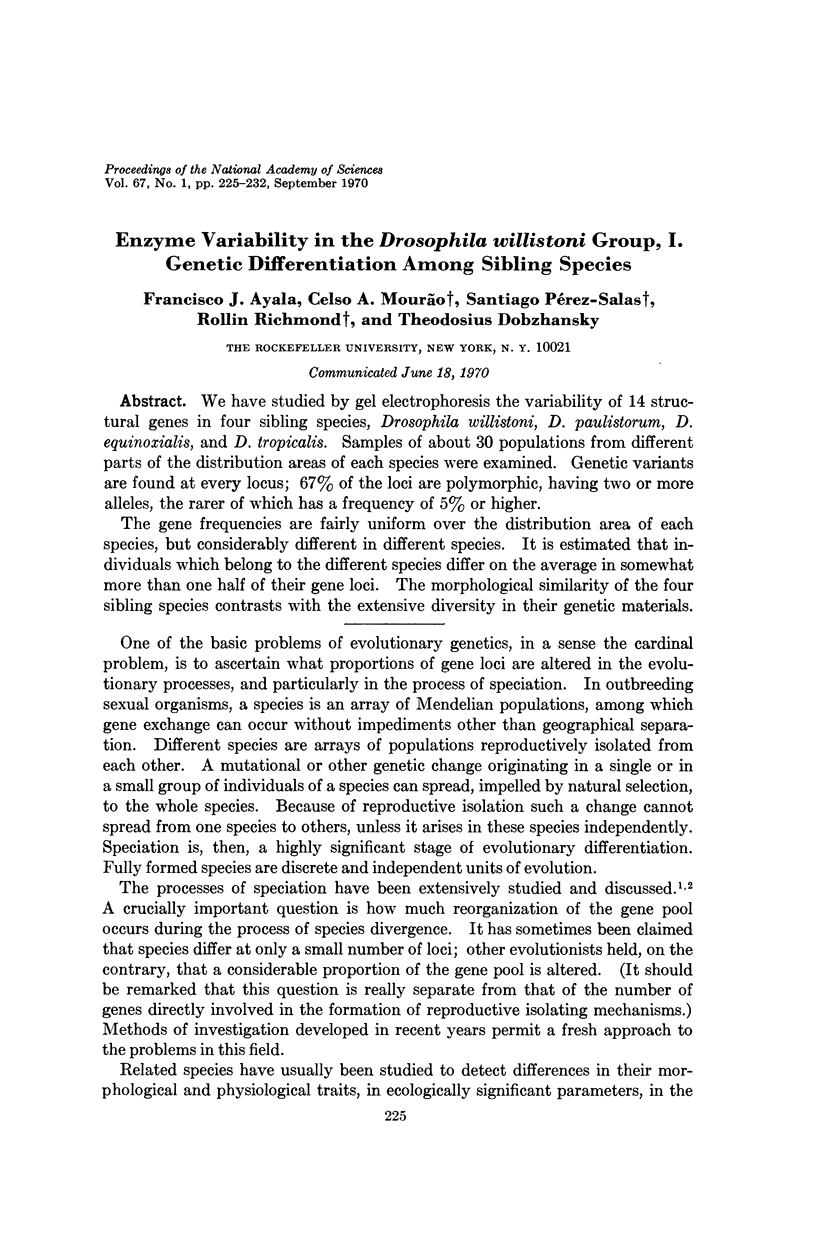
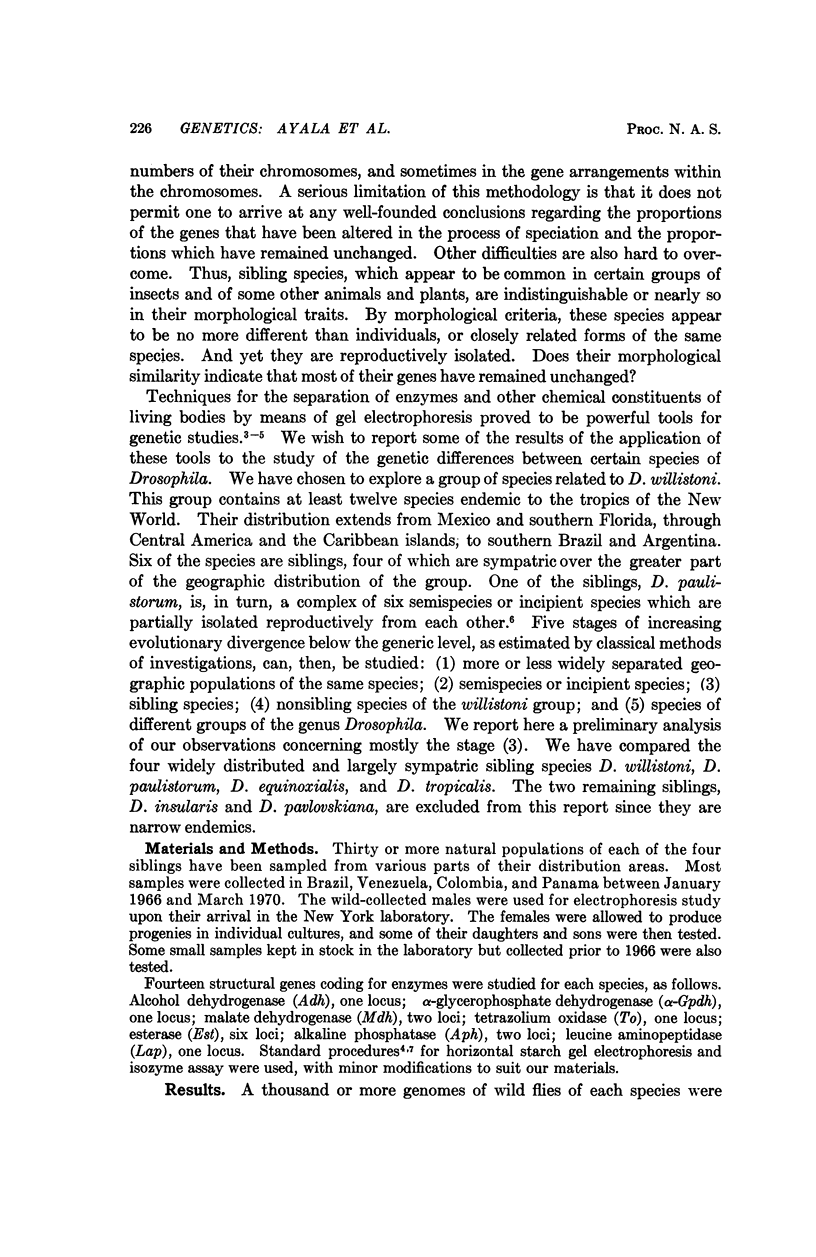
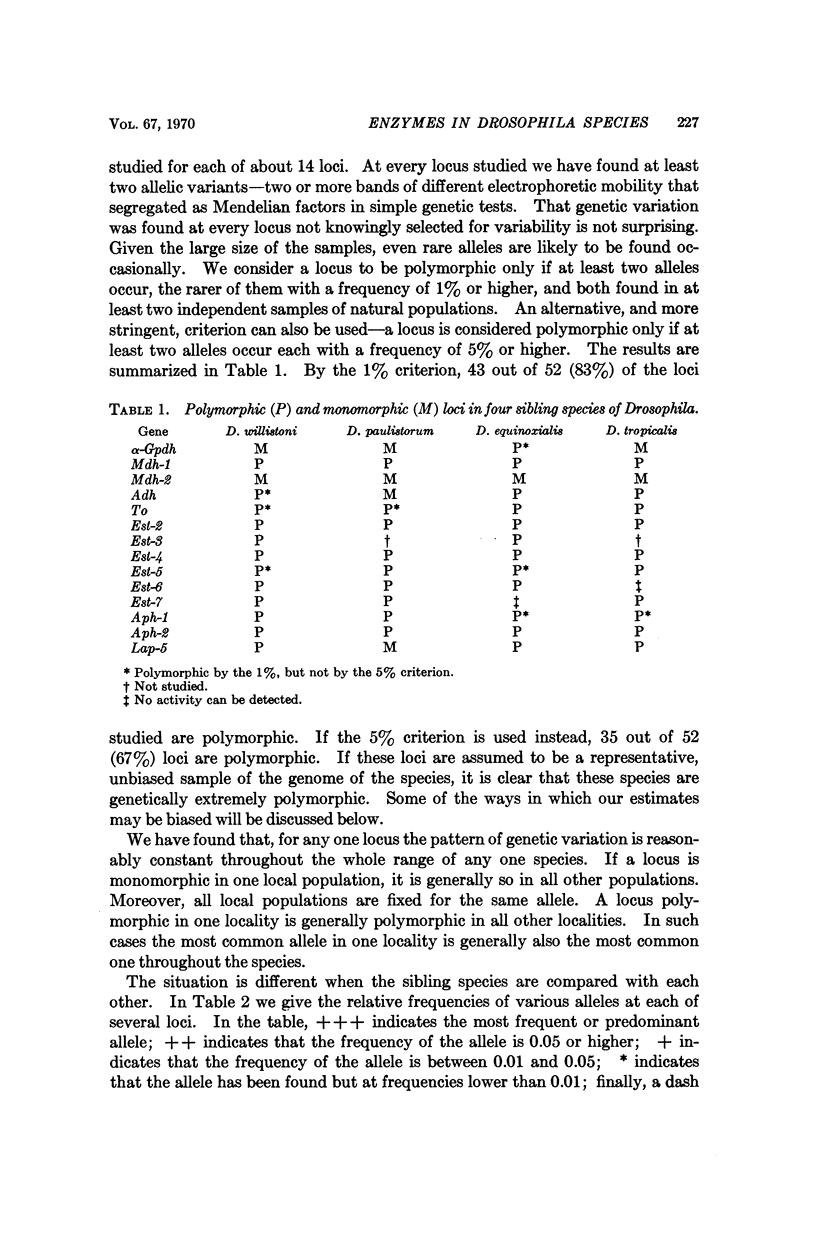
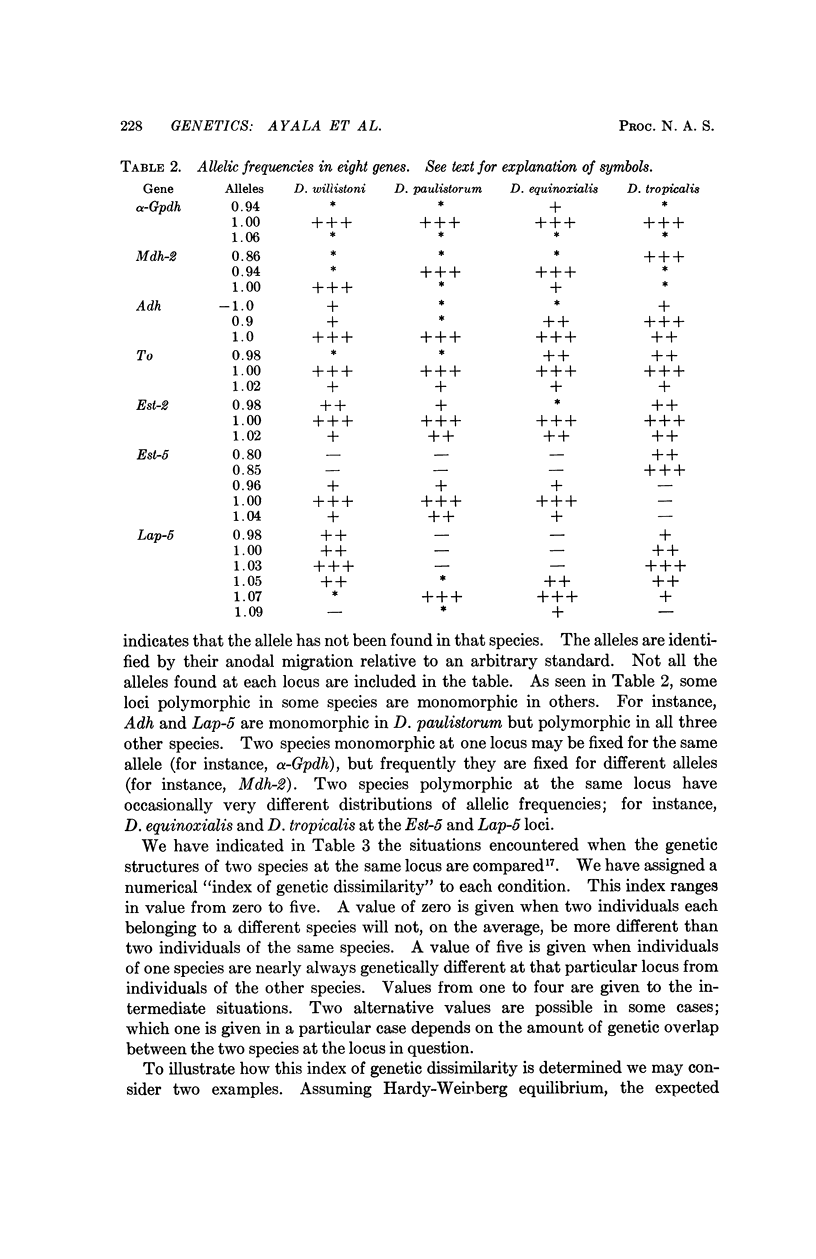
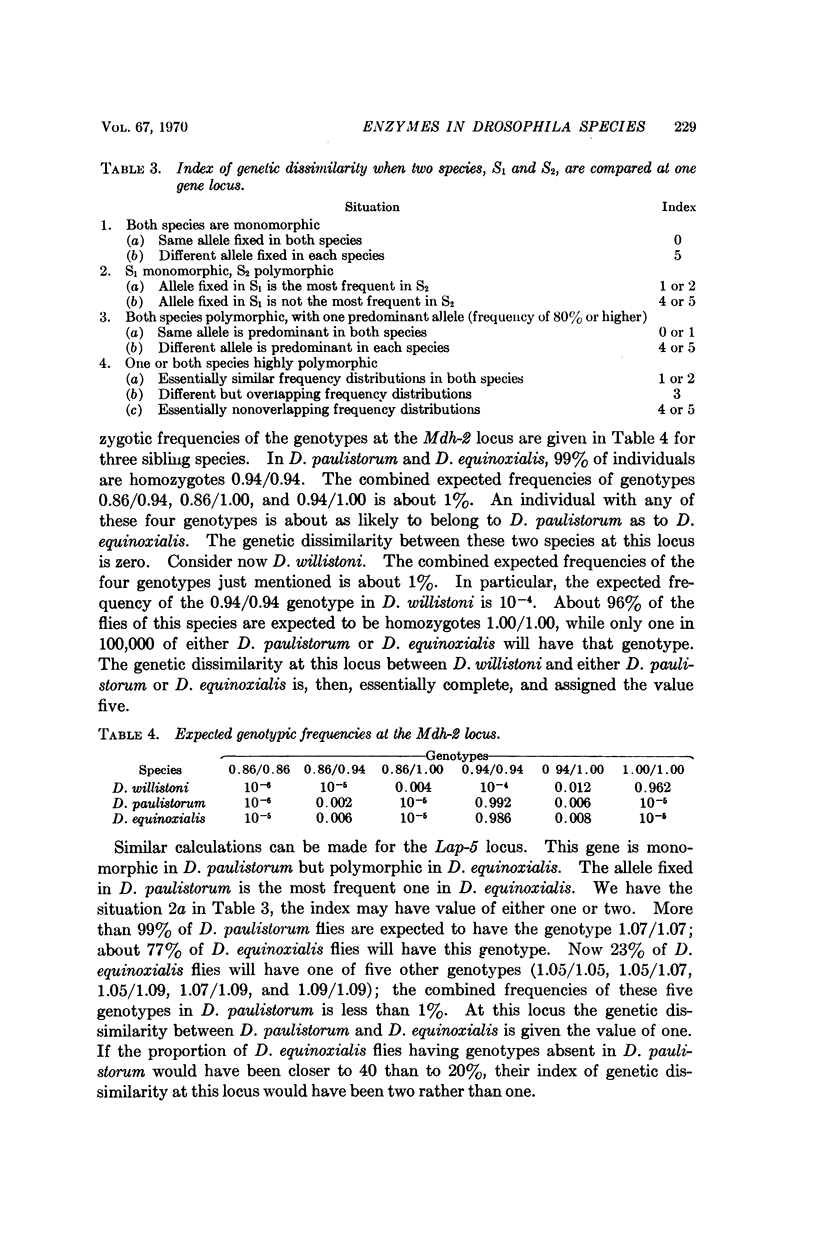
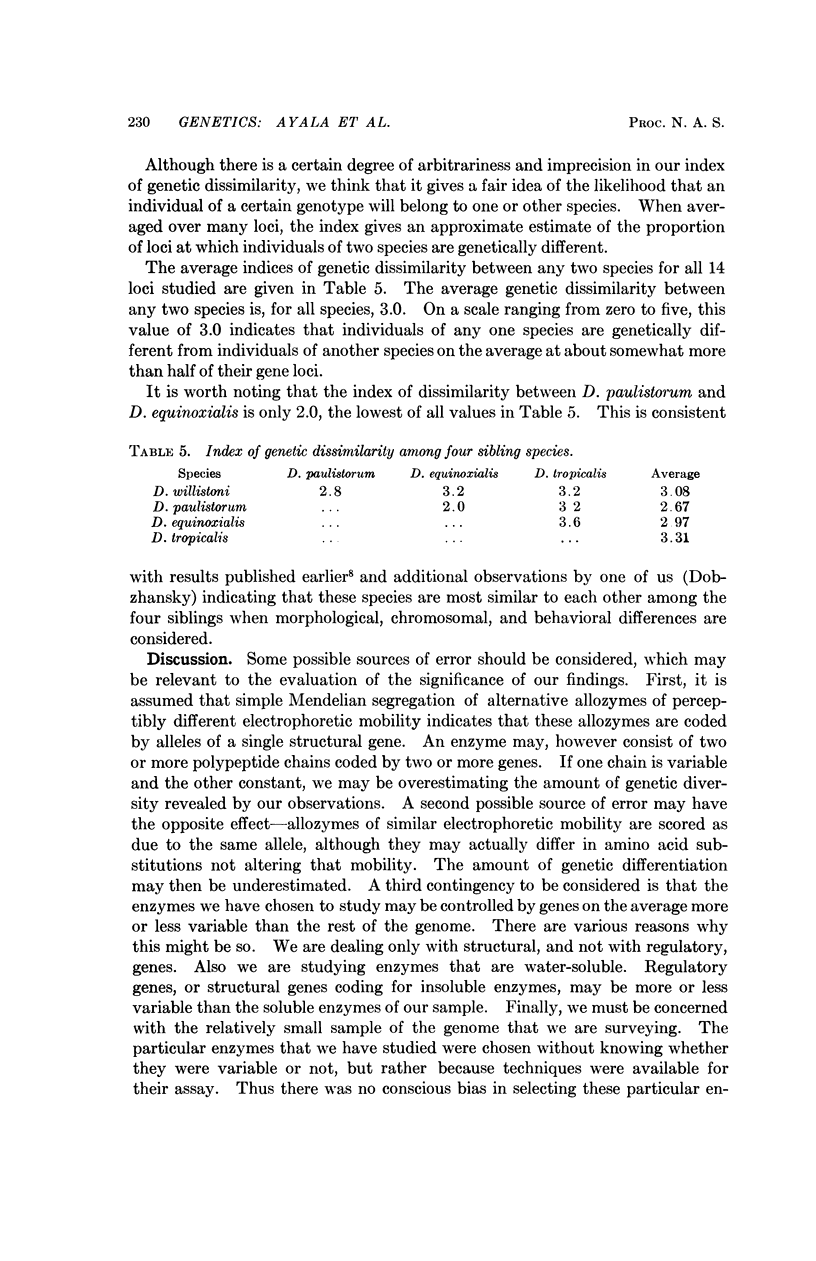
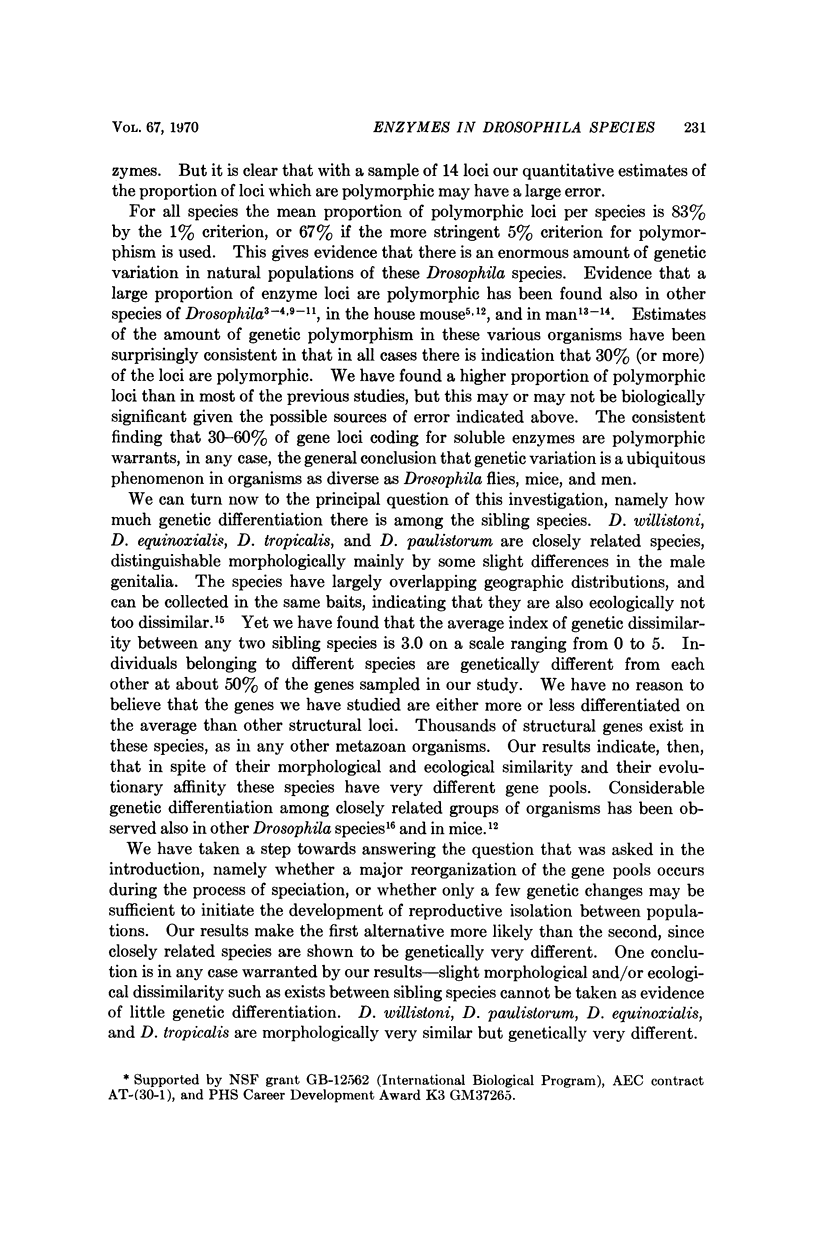
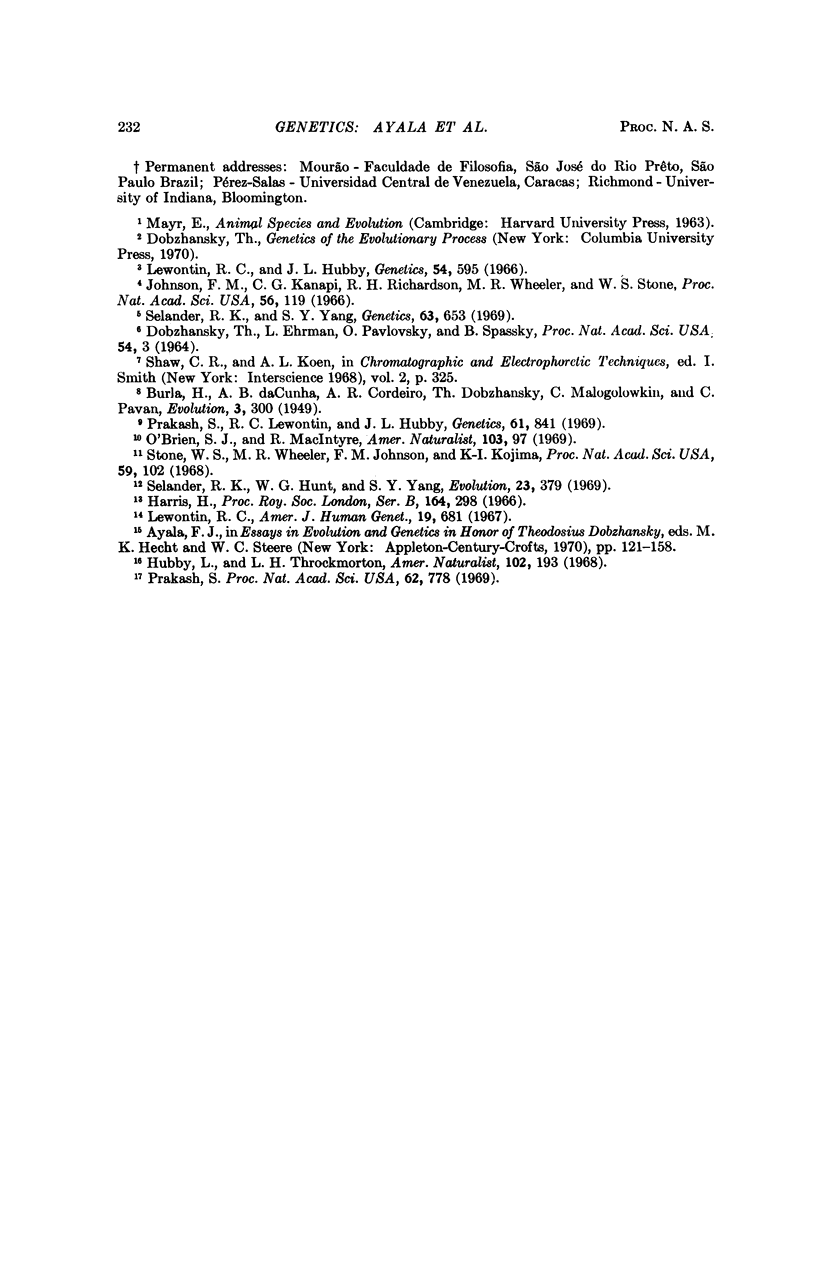
Selected References
These references are in PubMed. This may not be the complete list of references from this article.
- Johnson F. M., Kanapi C. G., Richardson R. H., Wheeler M. R., Stone W. S. An analysis of polymorphisms among isozyme loci in dark and light Drosophila ananassae strains from American and Western Samoa. Proc Natl Acad Sci U S A. 1966 Jul;56(1):119–125. doi: 10.1073/pnas.56.1.119. [DOI] [PMC free article] [PubMed] [Google Scholar]
- Lewontin R. C. An estimate of average heterozygosity in man. Am J Hum Genet. 1967 Sep;19(5):681–685. [PMC free article] [PubMed] [Google Scholar]
- Lewontin R. C., Hubby J. L. A molecular approach to the study of genic heterozygosity in natural populations. II. Amount of variation and degree of heterozygosity in natural populations of Drosophila pseudoobscura. Genetics. 1966 Aug;54(2):595–609. doi: 10.1093/genetics/54.2.595. [DOI] [PMC free article] [PubMed] [Google Scholar]
- Prakash S. Genic variation in a natural population of Drosophila persimilis. Proc Natl Acad Sci U S A. 1969 Mar;62(3):778–784. doi: 10.1073/pnas.62.3.778. [DOI] [PMC free article] [PubMed] [Google Scholar]
- Prakash S., Lewontin R. C., Hubby J. L. A molecular approach to the study of genic heterozygosity in natural populations. IV. Patterns of genic variation in central, marginal and isolated populations of Drosophila pseudoobscura. Genetics. 1969 Apr;61(4):841–858. doi: 10.1093/genetics/61.4.841. [DOI] [PMC free article] [PubMed] [Google Scholar]
- Selander R. K., Yang S. Y. Protein polymorphism and genic heterozygosity in a wild population of the house mouse (Mus musculus). Genetics. 1969 Nov;63(3):653–667. doi: 10.1093/genetics/63.3.653. [DOI] [PMC free article] [PubMed] [Google Scholar]
- Stone W. S., Wheeler M. R., Johnson F. M., Kojima K. I. Genetic variation in natural island populations of members of the Drosophila nasuta and Drosophila ananassae subgroups. Proc Natl Acad Sci U S A. 1968 Jan;59(1):102–109. doi: 10.1073/pnas.59.1.102. [DOI] [PMC free article] [PubMed] [Google Scholar]


